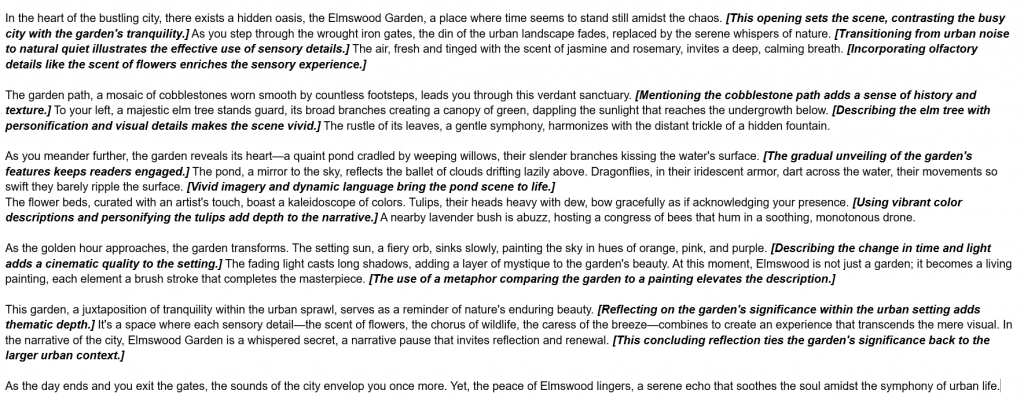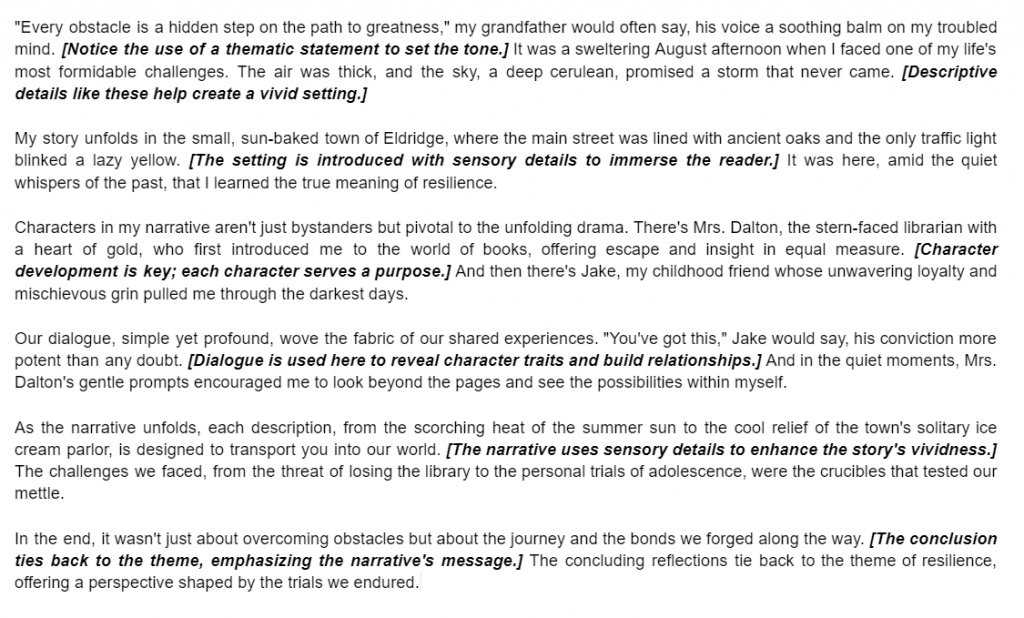Embarking on your university journey is like diving into a sea of knowledge, where every lecture and textbook adds to your academic arsenal. Yet, beyond the facts and figures lies a crucial layer: the less-discussed skills. Powerful forces work quietly in the background, molding future leaders, innovators, and critical thinkers. Beyond the usual course lineup, such skills enrich your education, transforming a simple degree into a collection of meaningful experiences. They prepare you to engage with the world, manage surprises, and steer through life’s complex challenges.
Let’s begin this journey together, where every skill mastered opens up a new opportunity!
Emotional intelligence: Navigating emotions for success
Emotional intelligence is key in identifying, understanding, and managing our own emotional states, as well as recognizing and influencing the feelings of others. In the active and often stressful environment of university life, where stress and various social interactions are routine, improving your emotional intelligence is crucial for managing stress, working effectively with others, and promoting strong relationships. Here are advanced strategies to improve emotional intelligence:
- Improving emotional awareness. It’s essential to not only be mindful of your own emotions but also to understand their origins and how they affect both you and others. Incorporating mindfulness practices and engaging in active listening can significantly help in this process, encouraging a deeper connection with your emotional landscape and that of those around you.
- Emotion regulation. Mastering emotion regulation involves more than just controlling your feelings; it’s about recognizing the most appropriate ways and times to express them. Techniques such as deep breathing exercises, taking structured breaks, and employing positive self-talk are effective in managing emotions, especially in high-stress situations.
- Growing empathy. Empathy grows beyond just understanding others’ perspectives; it involves active listening and keeping an openness to the experiences of others. This empathetic stance improves communication and strengthens interpersonal connections, making it a cornerstone of effective emotional intelligence.
By actively developing emotional intelligence, you not only enrich your personal life but also set a strong foundation for professional achievement. These skills are universally valued and can significantly impact career success. Additionally, they help in building a more empathetic and understanding community, strengthening the positive impact beyond just personal achievements.

Key skills every university student needs
Starting with the foundation of emotional intelligence, let’s explore a wider range of key skills that every university student should develop. These skills go beyond traditional academic boundaries, providing a more well-rounded approach to achieving success in both your studies and future career paths.
Improving communication
Effective communication is a cornerstone of university success and vital for your future career. It includes academic writing, verbal interactions, and the ability to present your ideas clearly and persuasively. Here’s how you can improve these skills:
- Written communication. Start by sharpening your writing skills, essential for preparing compelling essays, and professional emails. Focus on clear expression, structured arguments, and concise language. Practice in real-world contexts like online academic forums or by contributing to subject-specific discussion boards, which provide valuable feedback and various perspectives.
- Verbal communication. Your speaking skills are tested in various university settings, from debates to presentations. To improve, actively participate in clubs or workshops that offer speaking opportunities. The feedback from these activities is invaluable for refining your delivery and making your arguments more compelling.
- Diverse reading. Develop your communication skills by reading widely. This should include literature from different genres, fields of study, and cultural perspectives. Openness to diverse vocabularies and writing styles increases your own expression and helps communicate more effectively with a broader audience.
- Public speaking. Overcoming the fear of public speaking is crucial. Start by speaking in front of small, familiar groups and gradually increase your audience size. Recording your presentations and reviewing them can provide insights into your body language, pacing, and use of visual assistance, helping you to continuously improve.
- Real-world application. Use your communication skills in internships and team projects, where clear, concise, and purposeful exchanges are key. This improves collaboration and project results, whether through presentations, reports, or group discussions.
With strong communication skills as our foundation, let’s delve into another critical aspect of university success: creatively solving problems.
Solving problems creatively
University life’s challenges require advanced problem-solving skills, which extend beyond very quick fixes to a deep understanding, innovative brainstorming, and strategic solution implementation. Improve your problem-solving capabilities through:
- Embracing various learning experiences. Delve into project-based learning to apply theoretical knowledge to practical situations, encouraging both critical thinking and problem-solving skills.
- Fostering creativity and curiosity. Stimulate your creativity and curiosity by exploring open-ended questions. This approach broadens your perspective and encourages innovative problem-solving strategies.
- Adopting self-directed learning. Cultivate the habit of learning independently. Confronting and overcoming challenges on your own builds resilience and improves your ability to tackle problems creatively.
- Exploring individual creative projects. Engage in personal projects that challenge your problem-solving skills. This can include independent research, inventing, or designing, which allows you to apply your knowledge and creativity in a focused manner without depending on team dynamics.
Beyond problem-solving, the ability to critically evaluate information and arguments is crucial. Let’s explore how critical thinking and analysis play a role in academic excellence.
Critical thinking and analysis
Critical thinking and analysis involve more than just asking questions; they require a deep dive into evaluating arguments, identifying biases, and making informed decisions. These skills are key for research, managing information overload, and engaging in meaningful academic discussions. Here’s how to hone these essential abilities:
- Evaluating arguments and evidence. Focus on the strength of arguments and the credibility of evidence. Uncover hidden beliefs, spot flaws, and evaluate information for relevance and reliability.
- Developing a questioning mindset. Stay curious and always question the status quo with “why?” and “how?” This approach encourages active learning and deeper understanding.
- Recognizing preferences. Practice spotting biases in both the information you come across and your own viewpoints. Consider the source’s context and motives to better understand potential preferences.
- Applying logic and reasoning. Employ both deductive and inductive reasoning to form well-supported conclusions, ensuring your judgments are clear and unbiased.
- Real-world applications. Critical thinking is invaluable beyond academia, from analyzing business proposals to interpreting market trends and participating in societal discussions. It’s essential for making informed decisions in professional and everyday contexts.
- Regular learning and adaptation. It is important to keep up with new developments in your field, stay open to new ideas, and be willing to revise your opinions with new insights as knowledge constantly evolves.
Equally important in navigating both academic challenges and life’s uncertainties is the ability to adapt. Flexibility and adaptability are next on our path to success.
Flexibility and adaptability
Flexibility and adaptability allow students to effectively handle changes in academic environments, teaching methods, and social settings. These skills, which involve an open mindset, openness to new ideas, and creative problem-solving, are crucial for academic achievement and professional success. Being adaptable helps you adjust to varied situations with resilience. To improve these skills:
- Step outside your comfort zone. Engage in activities that introduce you to new ideas and perspectives. This can be as simple as attending multicultural events or taking on projects unrelated to your major.
- Engage in new activities. Broaden your horizons by getting involved in various activities outside your usual scope, such as joining clubs, attending workshops, or participating in community service. These experiences can improve your adaptability and understanding of different perspectives.
- Keep up with technology. Stay informed about the latest technological advancements and understand how they apply to your field of study. This knowledge can make you more adaptable in both academic and professional settings.
- Embrace change. See change as a constant aspect of life and treat each challenge as an opportunity to grow and learn.
Building a strong network is another key to success. Let’s consider how encouraging relationships and networking can open doors to opportunities.
Building networks and relationships
Networking during your student years is crucial, offering chances to connect with a diverse group of people, from peers to professionals. Active participation in events and strategic use of platforms like LinkedIn can lead to valuable opportunities. True networking focuses on mutual benefits. To improve your networking:
- Seek mentorship. Actively look for mentors by reaching out to professionals in your field of interest, whether through LinkedIn, alumni networks, or industry events. A good mentor can offer insights and advice drawn from their own experiences, helping to guide your academic and career journey.
- Value quality. Prioritize meaningful connections over having numerous contacts, promoting growth on both sides.
- Support professionalism online. As digital appearance becomes increasingly vital, ensure your interactions, especially on professional networks like LinkedIn, are professional. For guidance on creating a polished LinkedIn profile and engaging professionally online, explore this resource.
As we navigate the complexities of building meaningful professional relationships, the digital landscape plays a key role. Mastering digital tools and platforms is not just beneficial but essential for effective networking in today’s tech-centric world.
Navigating the digital world
Digital literacy is important in our tech-centric world, extending beyond basic software to include knowledge of cloud computing, web development, and graphic design. To stay ahead:
- Explore technology. Engage yourself in key digital areas through hands-on practice and online learning.
- Use collaborative tools. Gain proficiency in tools that support remote work and study, like project management software and virtual meeting platforms.
Embracing the vast digital landscape requires not only technical skills but also a strong foundation of discipline and motivation. The ever-evolving nature of technology challenges us to continuously learn and adapt, underscoring the importance of cultivating these inner strengths.
Building discipline, motivation, and drive
The journey through the digital world and academia alike requires sustained discipline and motivation. Finding personal motivation powers our passion, while discipline keeps us focused and on track toward our goals, especially when navigating the fast pace of technological change. To build and support these qualities:
- Set clear goals. Start with self-reflection to establish goals that align with your values and aspirations, giving your efforts direction and purpose.
- Plan with flexibility. Develop a structured plan for achieving your goals but remain flexible. Adaptability in the face of unexpected challenges is key to keeping progress.
- Celebrate milestones. Recognize and celebrate every achievement, big or small. These celebrations are key points in your journey, lifting your motivation and showing your dedication.
Finally, organizing your life and studies effectively can transform your university experience. Let’s explore strategies to achieve this success.
Organizing for Success
Effective organization skills can elevate your university experience from just getting by to truly excelling.
It involves more than scheduling study time; it’s about finding the right balance between academics and free time while staying ahead of your tasks. Here’s how to improve your organization:
- Prioritize tasks. Select the urgency and importance of your tasks to direct your focus effectively.
- Use digital tools. Integrate task management software, digital calendars, and note-taking apps into your daily routine for a more organized and accessible overview of your responsibilities.
- Adopt study techniques. Combine these tools with proven study methods, such as the Pomodoro Technique or spaced repetition, to boost learning efficiency and memory.
- Reflect and adjust. Regularly evaluate and be willing to change your organizational approach as needed. Staying flexible and responsive to new challenges is key to saving effectiveness.

Expanding your skill set: More vital skills for your success
Building on foundational skills like emotional intelligence and communication, we recognize that a holistic university experience encompasses much more. Let’s delve into additional essential skills that further improve your university journey and prepare you for the ever-evolving professional world.
Effective feedback exchange
Constructive feedback is instrumental in both personal growth and professional development. To make the most of feedback opportunities:
- Articulate constructively. When giving feedback, be clear and specific. For instance, if you’re peer-reviewing a classmate’s presentation, focus on particular aspects like clarity of speech or effectiveness of visual aids.
- Embrace receptivity. Adopt a mindset that sees feedback as a growth opportunity. In group projects, actively seek out feedback and use it as a springboard for improvement.
Resilience and perseverance
The journey through university and beyond is punctuated with challenges that test our resilience, while perseverance is what drives us forward, keeping our eyes on the prize even when the path gets tough. Here are ways to build these vital qualities:
- Build resilience. Embrace challenges, whether it’s a challenging course or a complex project, as opportunities to strengthen your resilience. Develop a growth mindset that views setbacks as learning opportunities, and don’t shy away from seeking support when needed, whether it’s from peers, mentors, or counselors.
- Stay the course. Break down your long-term goals into smaller, manageable milestones, celebrating each achievement to keep motivation. Remember, perseverance isn’t just about strict effort; it’s also about recognizing when to adapt your strategies or seek new perspectives to overcome obstacles.
Creative problem-solving
While we’ve discussed the importance of collaborative and project-based approaches to solving problems creatively, it’s equally vital to highlight personal innovation and adaptability in the creative process. Creative problem-solving is not just about group dynamics but also about how you, as an individual, approach challenges with a fresh perspective and a desire to experiment and adapt. Here’s how you can boost this personal touch:
- Encourage personal innovation. Cultivate a mindset that welcomes experimentation and innovative thinking in everyday challenges, beyond structured projects.
- Adapt and overcome. Learn to dynamically change your strategies based on outcomes and feedback, showcasing the ability to think on your feet and keep a creative edge.
Managing relationships and resolving disagreements
Effective communication is crucial not only for sharing ideas but also for understanding and navigating relationships with others. Being skilled in resolving disagreements is key to keeping interactions productive and positive, whether you’re working on a group project in school or collaborating with colleagues at work:
- Understanding relationships. Pay close attention to how people interact in groups. Notice different roles and behaviors and think about how they affect everyone working together.
- Solving disagreements. Get better at resolving disagreements by practicing techniques like really listening to others and finding a middle ground in discussions or debates.
Lifelong learning attitude
In an ever-changing world, the desire to continue learning is necessary. A commitment to lifelong learning keeps your skills relevant and your mind sharp:
- Seek opportunities. Regularly look for ways to expand your knowledge, whether through additional courses, seminars, or self-study.
- Adapt and grow. Embrace new methodologies or technologies introduced in your coursework as a means to expand your skill set.
Mindfulness and self-care
Achieving academic success involves more than just intellectual growth; it encompasses holistic well-being, which is key for supporting focus, efficiency, and overall health through the rigors of university life. Here’s how you can embrace these skills:
- Broaden mindfulness practices. Beyond emotional understanding, integrate mindfulness techniques that improve well-being, like yoga or tai chi, which combine physical movement with mental focus and relaxation.
- Total self-care. Develop the concept of self-care to include activities that feed your soul and spark joy, such as engaging in hobbies, spending time in nature, or practicing gratitude, which contributes to a well-rounded sense of well-being.
Embracing these skills not only enriches your experience as a student but also lays a strong foundation for success and well-being in your personal and professional life, ensuring you’re well-prepared for the diverse challenges and opportunities ahead.

Conclusion
| Remember that university is more than academics; it’s a holistic journey that shapes your entire being. The skills we’ve explored—from emotional intelligence to creative problem-solving—equip you for life’s challenges and opportunities. Embrace this journey with openness and curiosity. Each skill you develop not only advances your academic goals but also prepares you for a fulfilling life and career. Keep learning, adapting, and growing, and you’ll not only succeed in university but also make a meaningful impact in the world. Here’s to the journey ahead, where each step is a new discovery and every challenge a chance to reveal your potential. |











































